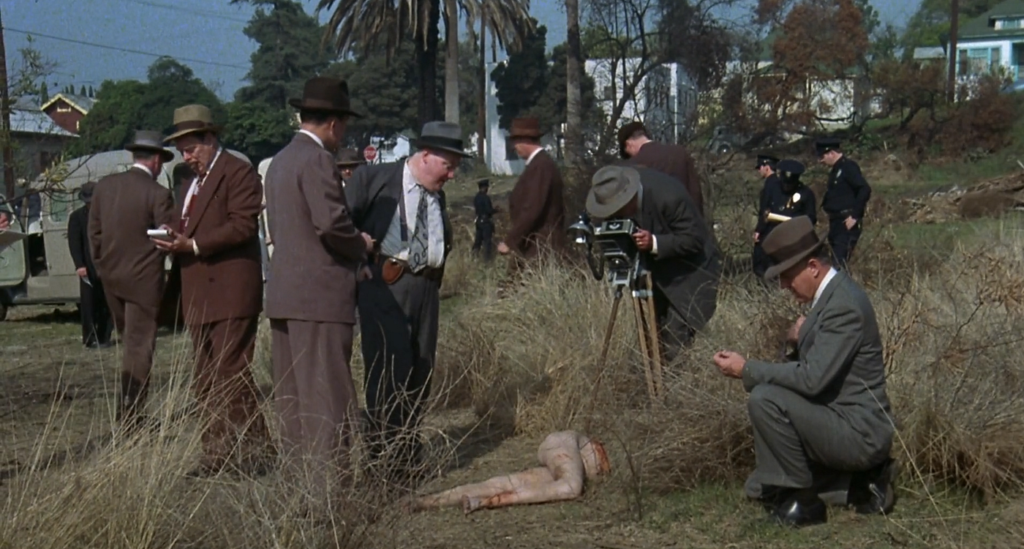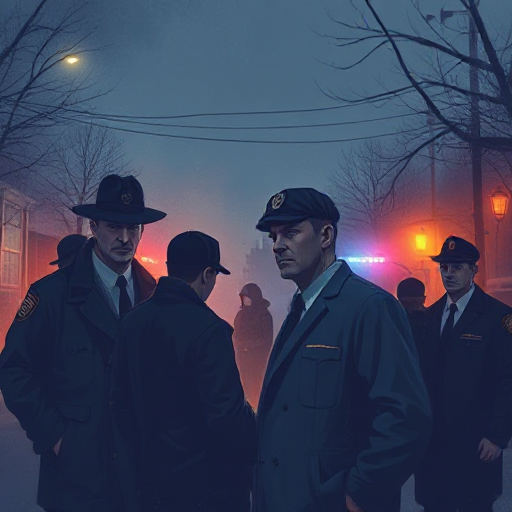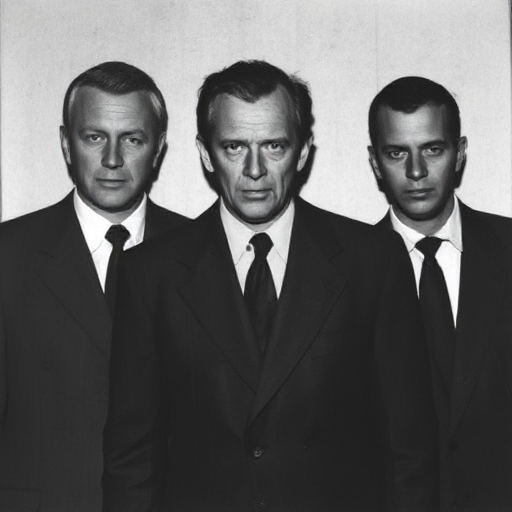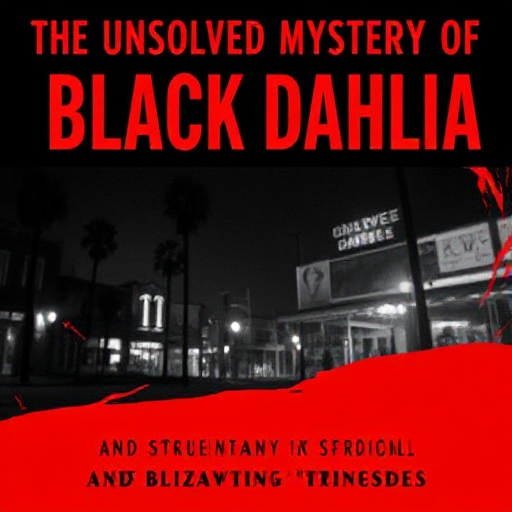In the bustling heart of Los Angeles in the late 1940s, a crime gripped the nation and left an indelible mark on American history. The murder of Elizabeth Short, famously dubbed the “Black Dahlia,” remains one of the most notorious unsolved cases in the annals of true crime. This story, steeped in intrigue, scandal, and unanswered questions, continues to captivate audiences today.
The Rise of Elizabeth Short

Elizabeth Short was born on July 29, 1924, in Hyde Park, Massachusetts. From a young age, she dreamed of becoming an actress, drawn to the glitz and glamour of Hollywood. In 1943, at the age of 19, she moved to California, where she quickly became a familiar face in the local social scene. Known for her striking beauty, with dark hair and piercing blue eyes, Short garnered attention wherever she went. However, her life was not without struggles; she faced numerous hardships, including financial instability and tumultuous relationships.
By the time she arrived in Los Angeles, Short had adopted a distinctive style that would earn her the nickname “Black Dahlia.” She often wore black clothing and was known for her love of dramatic makeup. Her enigmatic presence drew people in, but her life was marred by a series of failed romances and a longing for fame that remained just out of reach.
Despite her challenges, Short remained determined to make a name for herself in Hollywood. She took on various odd jobs to support herself, including working as a waitress and a model. Friends described her as charming and vivacious, with an infectious laugh that could light up a room. However, behind her captivating exterior lay a deep-seated vulnerability and a desire for acceptance.
The Gruesome Discovery

On January 15, 1947, the city of Los Angeles was rocked by a horrific discovery. A woman’s body was found in a vacant lot in the Leimert Park neighborhood, cut in half and meticulously posed. The victim was later identified as Elizabeth Short. The brutality of the crime shocked the nation, and the media wasted no time sensationalizing the story.
The details of the murder were gruesome: Short’s body had been drained of blood, and her face was mutilated, with deep cuts carved into her mouth, creating a haunting smile. The killer had taken great care in arranging the body, leading investigators to believe that this was not a random act of violence but a calculated murder.
As news of the murder spread, the public’s fascination grew. The media quickly seized upon the story, dubbing Short the “Black Dahlia” and portraying her as a glamorous yet tragic figure. Headlines screamed of the gruesome details, and the case became a sensational topic of conversation across the country.
The Investigation Begins

Detective John McGinnis and his team were assigned to the case, but they quickly found themselves overwhelmed by the media frenzy surrounding the murder. The press dubbed Short the “Black Dahlia,” and her story became a nationwide sensation. Reporters camped outside the police station, clamoring for updates, while the public was captivated by the mystery of her life and death.
As the investigation unfolded, detectives received a flood of tips and leads, but many proved to be dead ends. Witnesses reported seeing a woman matching Short’s description in various locations leading up to her death, but no concrete evidence emerged. The investigation was further complicated by the involvement of numerous amateur sleuths and self-proclaimed detectives, each eager to solve the case.
Detectives scoured the city for clues, interviewing friends and acquaintances of Short. They learned about her relationships, her aspirations, and the struggles she faced in a city that could be both alluring and cruel. But as the days turned into weeks, the investigation stalled, and the case grew cold.
The Suspects

As the investigation progressed, several suspects emerged, each with their own motives and connections to Short:
George Hodel: A prominent physician and socialite, Hodel was known for his eccentric behavior and connections to the Los Angeles elite. After the murder, he fled to Mexico, raising suspicions among investigators. His son, Steve Hodel, later claimed that his father was the killer in a book titled “Black Dahlia Avenger.” Steve’s assertions included disturbing evidence, such as photographs and witness accounts that linked Hodel to the crime.
Mark Hansen: A nightclub owner and acquaintance of Short’s, Hansen had been seen with her shortly before her death. Some speculated that he had a motive related to jealousy or a failed romantic relationship. Hansen’s connections to the entertainment industry made him a person of interest, but he maintained his innocence throughout the investigation.
Robert Manley: A salesman who had a brief romantic involvement with Short, Manley became a person of interest after he was seen with her days before her murder. However, he maintained his innocence, and there was no substantial evidence linking him to the crime. Manley’s alibi checked out, but the possibility of a love gone wrong lingered in the minds of investigators.
The Unidentified Caller: Shortly after the murder, a mysterious caller contacted the police, claiming to have information about the case. The caller taunted detectives, leading them to believe he might be the killer. However, the identity of this individual was never uncovered, adding another layer of mystery to the case.
Despite the numerous suspects and theories, the investigation stalled, and the case grew cold.
The Media Circus

The media’s obsession with the Black Dahlia case reached a fever pitch. Newspapers published sensational headlines, and Hollywood quickly capitalized on the story. Films, books, and documentaries began to emerge, each adding layers to the already complex narrative. The fascination with Elizabeth Short’s life and death only deepened as the years passed.
The case became a cultural phenomenon, inspiring countless theories and speculation. Some believed Short had been involved in a secret society, while others claimed she was a victim of a ritualistic killing. The public’s imagination ran wild, and the mystery surrounding her death only fueled the fire.
As the media frenzy continued, Elizabeth Short’s story became a cautionary tale about the dangers of fame and the darker side of Hollywood. The relentless scrutiny of her life and death transformed her into a symbol of the tragic consequences of ambition and desire.
The Legacy of the Black Dahlia

Decades passed, but the Black Dahlia case remained unsolved, becoming a symbol of the darker side of Hollywood. Elizabeth Short’s story resonated with many, representing the tragic fate of aspiring actresses who sought fame in a ruthless industry. Her life and death became emblematic of the struggle for identity and recognition in a world that often chewed up and spat out its stars.
In the years following the murder, several individuals claimed to have solved the case, but none provided conclusive evidence. The allure of the Black Dahlia continued to captivate new generations, inspiring books, films, and even television shows. The mystery persisted, shrouded in speculation and intrigue.
Theories and Speculations

Over the years, numerous theories have emerged regarding the identity of Elizabeth Short’s killer. Some believe that the murder was the work of a serial killer, while others suggest it was a crime of passion. The lack of physical evidence and the brutality of the crime have led to wild speculation, including theories involving organized crime, Hollywood elites, and even government conspiracies.
One popular theory posits that Elizabeth Short was involved with influential figures in Hollywood, leading to her untimely demise. This theory suggests that her murder was a cover-up to silence her, as she may have known too much about the dark underbelly of the entertainment industry. The idea that Short was a victim of powerful individuals who wanted to protect their secrets has fueled countless discussions and debates.
Another theory suggests that Short was killed by someone she knew, possibly a former lover or friend who felt betrayed. The intimate nature of the crime, combined with the careful positioning of her body, has led some to believe that the killer had a personal connection to Short.
The Enduring Mystery

Despite the passage of time, the Black Dahlia case remains one of America’s most enduring mysteries. In 2017, the LAPD officially closed the investigation, citing a lack of new evidence. However, the fascination with Elizabeth Short’s life and death shows no signs of waning. True crime enthusiasts continue to dissect the case, seeking answers to questions that may never be resolved.
The legacy of the Black Dahlia lives on, a testament to the power of storytelling and the human desire for closure. Elizabeth Short’s tragic fate serves as a reminder of the complexities of life, the darkness that can lurk beneath the surface, and the enduring quest for truth.
Conclusion
The story of Elizabeth Short, the Black Dahlia, is more than just a tale of murder; it is a reflection of society’s obsession with fame, beauty, and the darker aspects of human nature. As we continue to explore this chilling case, we invite you to follow our website for more captivating stories that delve into the mysteries of the past. Join us as we uncover the truth behind America’s most intriguing unsolved cases and honor the lives of those who have become legends in their own right.
Together, let us remember Elizabeth Short not just as a victim, but as a symbol of hope, resilience, and the unrelenting pursuit of justice. The Black Dahlia case, with its blend of glamour and horror, serves as a poignant reminder of the fragility of life and the shadows that can lurk in the pursuit of dreams.
As we reflect on this haunting tale, we encourage our readers to engage with the ongoing conversation surrounding unsolved mysteries and the impact they have on our understanding of society. Follow our website for more stories that unravel the complexities of human nature, the allure of fame, and the chilling realities that often lie beneath the surface.



You always select current topics that intrigue my curiosity. I thank you for that!